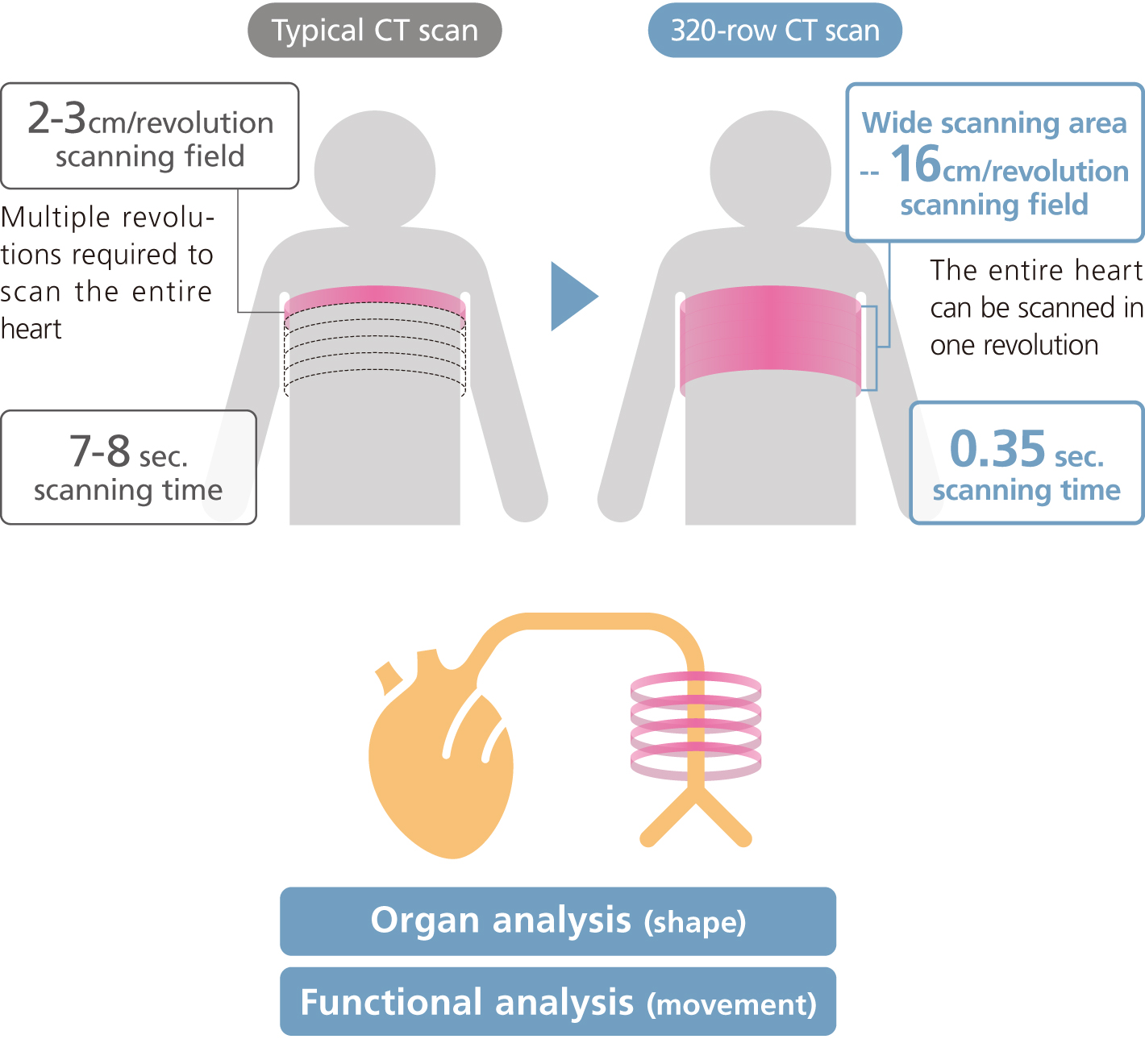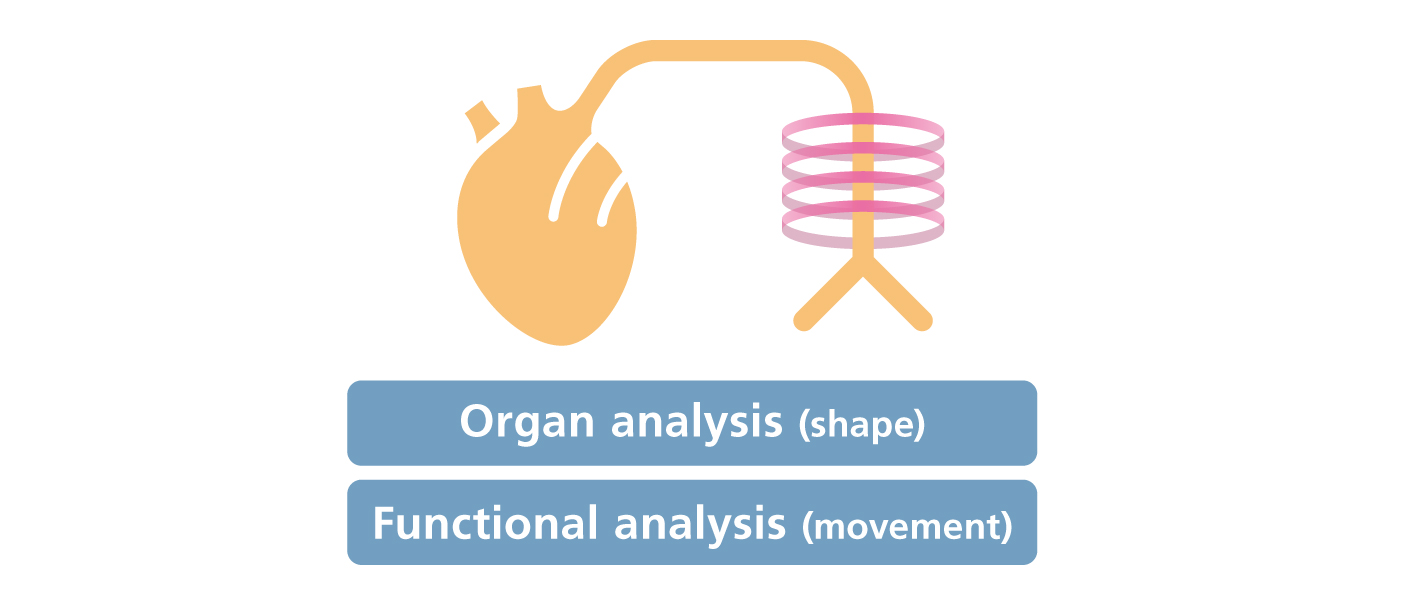Cardiovascular
System Screening
- HOME
- Cardiovascular System Screening

Heart disease is unpredictable and causes sudden death.
Find risk areas early and get treated early.Cardiovascular System Screening

Heart disease is unpredictable and causes sudden death.
Find risk areas early and get treated early.Cardiovascular System Screening
The cutting-edge 320-row CT scanner detects lesions with high precision and minimal risk to the patient.
Along with cancer, heart disease, is one of the leading causes of death around the world. Among heart diseases, coronary artery disease, also knowns as ischemic heart disease is most common and deadly. The coronary artery supplies blood to the heart. If it becomes blocked (myocardial infarction) or narrowed (angina pectoris) it can cause heart attack or sudden death. Having multiple risk factors such as high blood pressure, tobacco use, diabetes, physical inactivity, obesity, etc. greatly increase the risk of a coronary artery disease. Whether you notice symptoms or not, early detection and treatment are key to lessening the risk of sudden attack and improving quality of life.
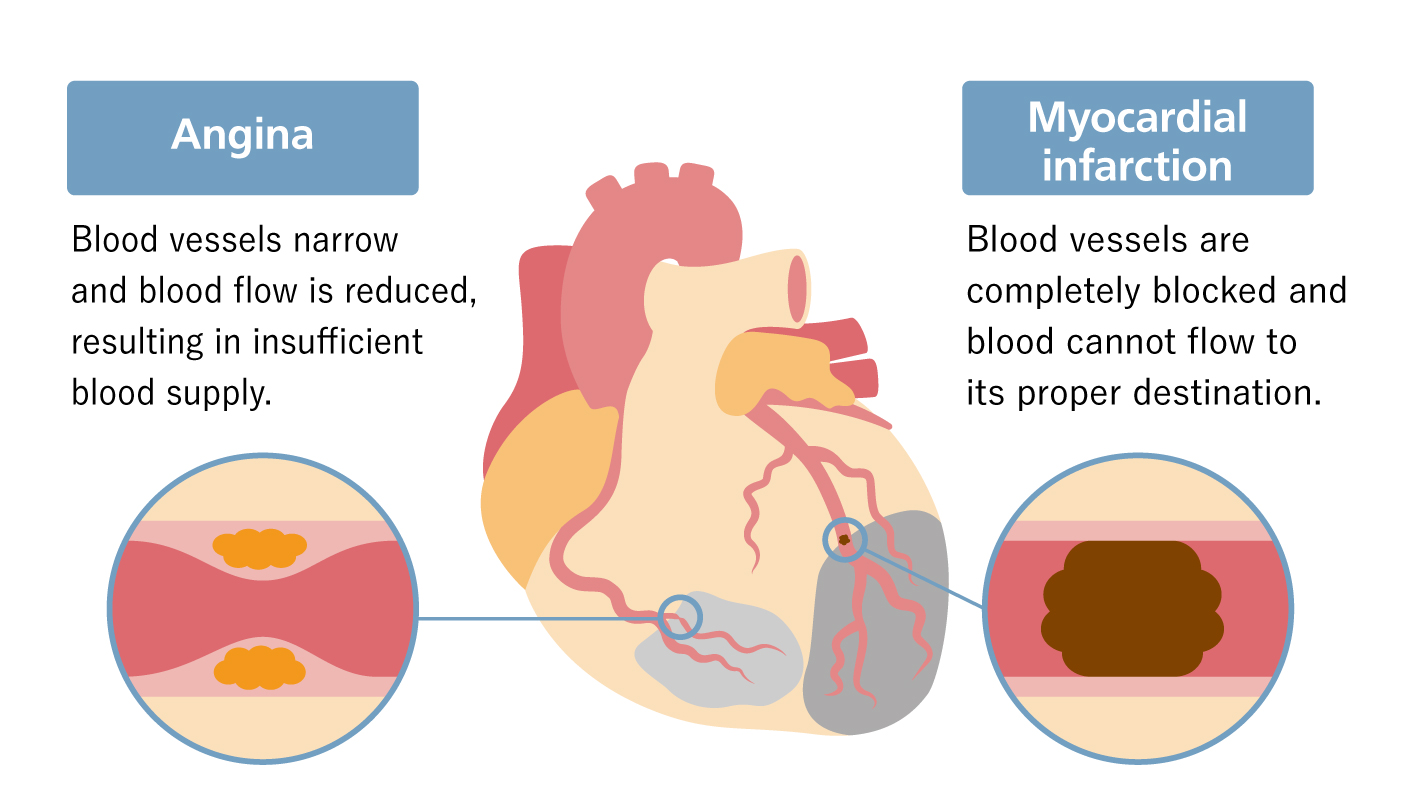
The cutting-edge 320-row CT scanner is capable of imaging the beating heart in high definition 3D in one revolution (0.35sec). This enables quick and accurate diagnosis of the major factors of heart disease: coronary artery narrowing and hardness.
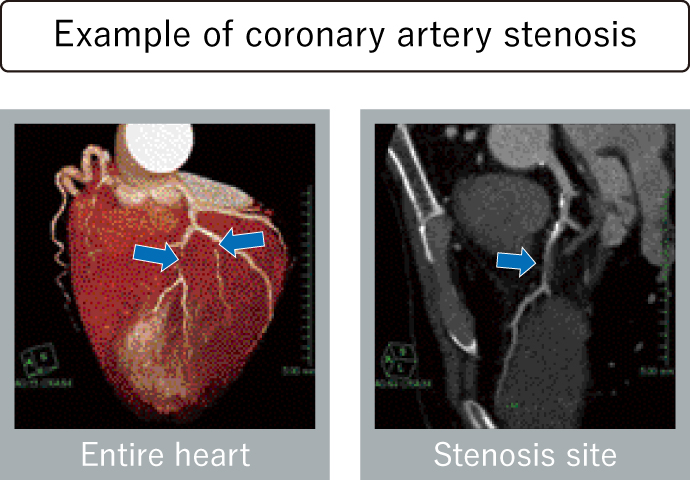
This course is recommended if you…
- have high blood pressure.
- have diabetes.
- have high cholesterol.
- are worried about your heart health.
- have a family history of heart disease.
- have a history of metabolic disorder.
- are a smoker.
Examination Process
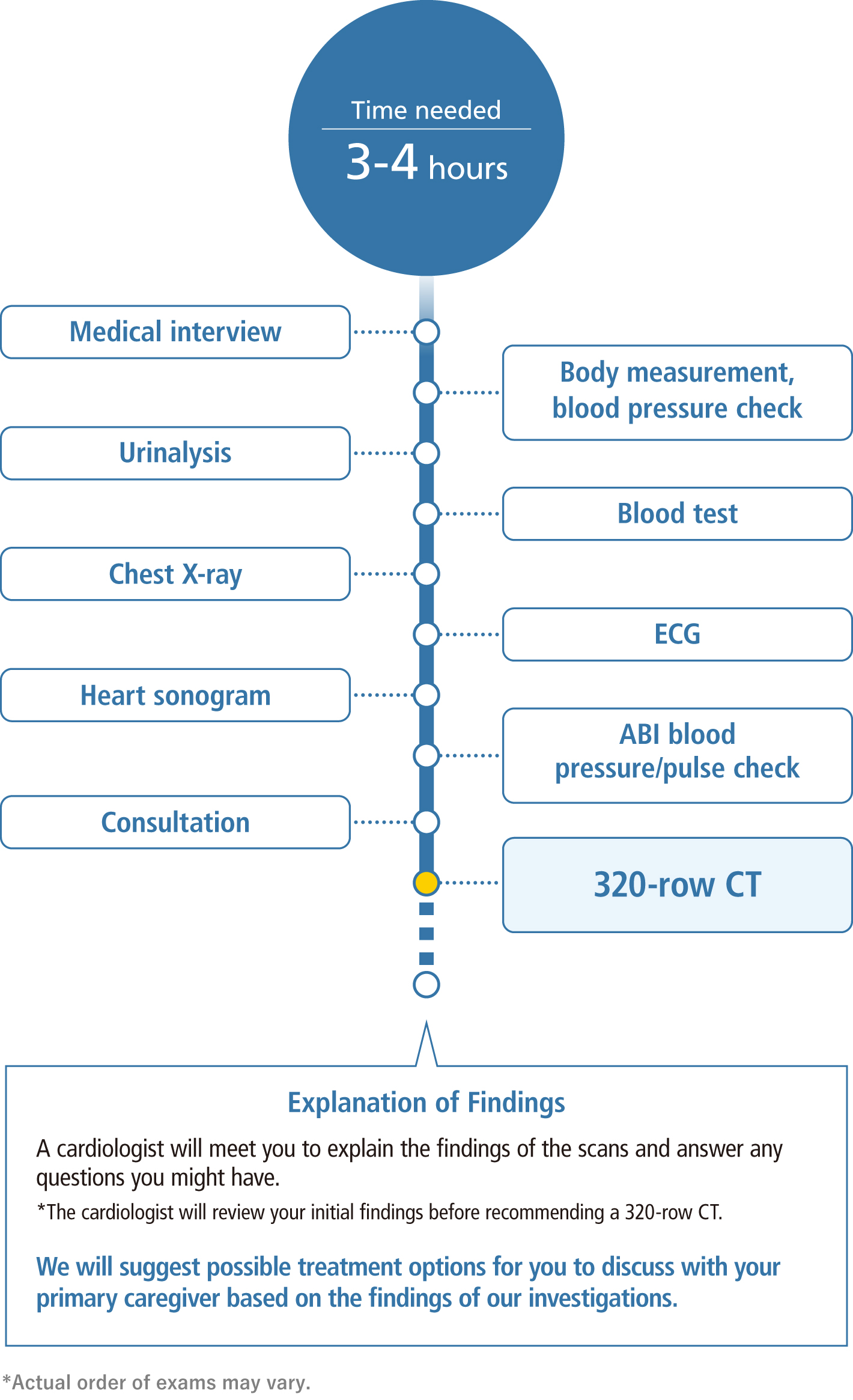

A powerful tool for diagnosing heart disease320-row CT

Many respected hospitals still use older 64-row or 128-row CT scanners. A 64-row scanner can capture areas of 2-3cm per revolution. While useful for taking images of non-moving organs, motion blur is a problem. Central Japan International Medical Center's 320-row CT scanner has 5x the number of detectors as a typical scanner. This makes it possible to image areas of up to 16cm in a single revolution (0.35sec). With this powerful tool, we can capture images of the beating heart in HD3D with no motion blur.
16cm/revolution scanning field
The entire heart in HD3D in 0.35 seconds
The 320 detectors can image an area of 16cm in one revolution - which takes only 1/3 of a second. This enables rapidly moving organs to be scanned in high definition 3D without motion blur.
Reduced scanning time
Less radiation and contrast dye
Older CT scanners require 7-8 seconds to fully image the heart. The 320-row CT needs only 0.35 seconds to do the same job, reducing the patient's time and stress burden.
Rapid continuous imaging
Angiography and functional imaging
By continuous and rapid imaging of the beating heart, aggregate data can be analyzed to extract information such as cardiac wall thickness, systolic output, making functional evaluation by CT possible.
